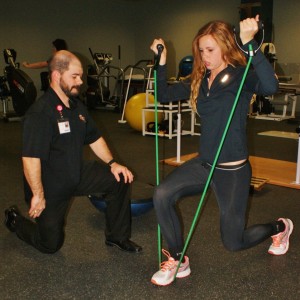 Physical Activity is Important
Physical Activity is Important
Most people know physical activity, such as regular exercise, is important for weight loss and optimal health. What some people do not realize is being physically inactive is considered a risk factor for several illnesses and medical conditions. According to the World Health Organization (WHO), about 2 million people worldwide die from conditions related to physical inactivity. People of all ages, from children to the elderly, can suffer negative consequences if they live a sedentary lifestyle and are physically inactive. Below are a few negative effects of physical inactivity.
Hypertension, which is also known as high blood pressure, is one of the main risk factors for having serious medical conditions develop, such as a stroke or kidney disease. Blood pressure measures how forceful blood is pushed against the artery walls. Physical activity, such as regular exercise, helps make the heart stronger. As the heart becomes stronger, it can pump blood more efficiently throughout the body. When the heart does not have to work as hard, less force is put on the arteries and blood pressure is lower.
The phrase “use it or lose it” really does apply when referring to the bones in the body. Without proper physical activity, overtime the bones can become weak. When this occurs, the condition is known as osteoporosis, which can cause the bones to fracture easily. The condition occurs most frequently in older adults. Physical activity helps strengthen the bones and prevent osteoporosis from developing.
Physical inactivity can contribute to heart disease in a few ways. The efficiency of coronary blood flow is impaired in people who are physically inactive. Another link between inactivity and heart disease is cholesterol levels. One of the main factors that contributes to heart disease is high cholesterol. The chances of developing high cholesterol increase in those who are physically inactive. Exercise helps lower LDL cholesterol levels. Being physically active can also increase levels of HDL cholesterol, which is good cholesterol that helps protect against heart disease.
When an individual has a body mass index over 30 he or she is considered obese. According to the WHO, people who are physically inactive have twice the risk of developing obesity. Obesity is a major health concern for people of all ages including children. Illnesses related to obesity include heart disease, hypertension, diabetes and sleep apnea. In the United States each year there are over 300,000 deaths related to obesity.
Along with physical problems related to inactivity, negative emotional effects can also develop. According to the WHO people who are sedentary are more likely to develop anxiety and depression. Exercise helps reduce or prevent anxiety and depression in several ways. When a person is physically active, chemicals are released in the brain which help improve mood and reduce stress.
Unlike other risk factors for diseases, such as age and gender, physical inactivity can be changed. Making lifestyle changes and incorporating daily physical activity, such as increasing walking and taking the stairs is a start. Adding regular exercise on most days of the week is optimal. The Centers for Disease Control and Prevention recommends 150 minutes of cardiovascular exercise a week and doing strength building exercise two days a week. The good news is, in time the negative effects of physical inactivity may be reversed or decreased. So get out there and start moving around. Do something physical. You will be glad you did.
Carol Gooch, MS, LPC-S, LCDC, LMFT, is a columnist for the Montgomery County Healthy Living Alliance www.healthylivingmc.com and she is the Director of Business Development for Aspire Hospital at 2006 South Loop 336 West, Suite 500, Conroe, TX 77304. www.aspirehospital.com. She is also the Founder & Executive Director of the Montgomery County Association of Business Women. www.mcabw.org
